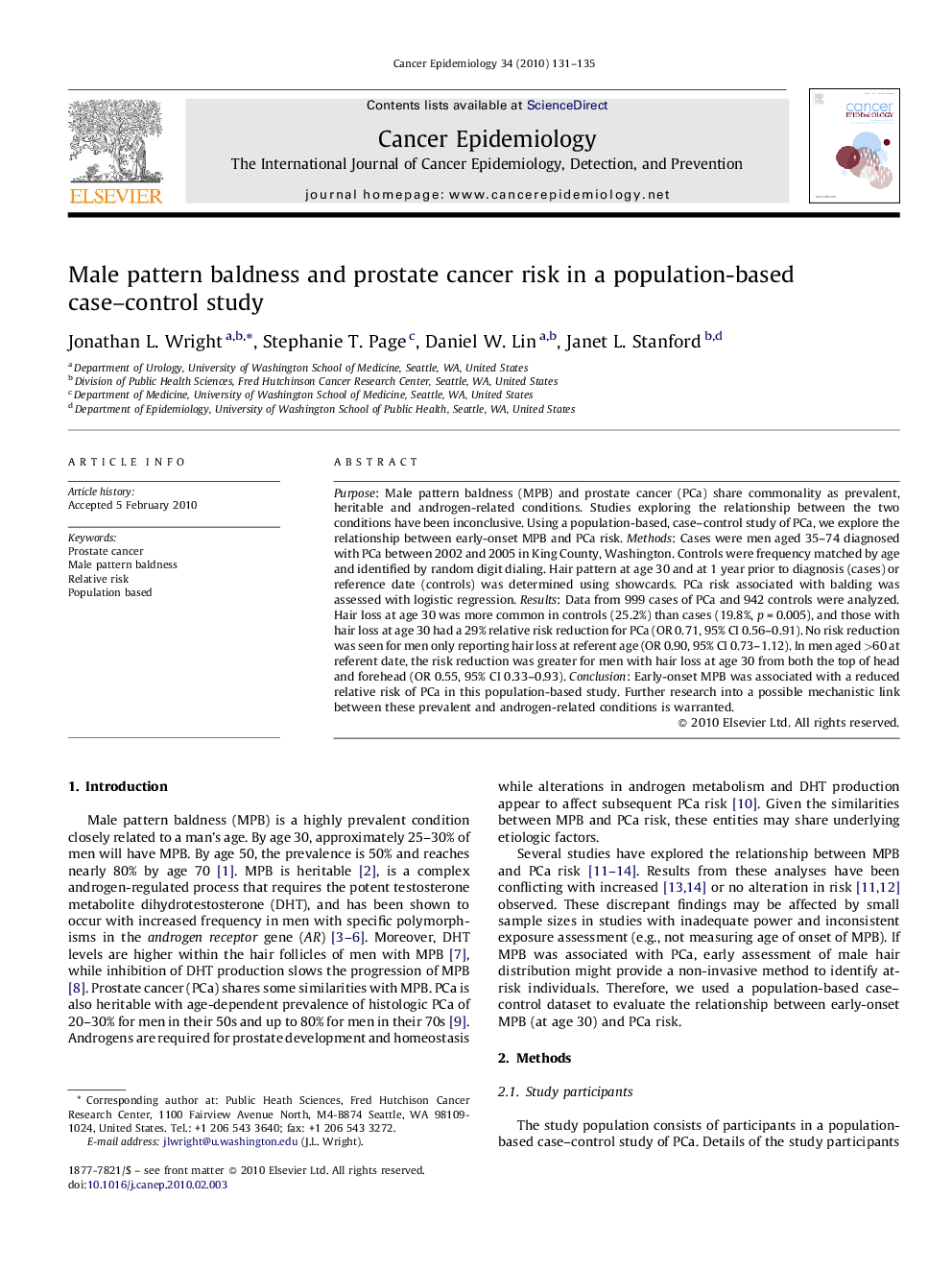| Article ID | Journal | Published Year | Pages | File Type |
|---|---|---|---|---|
| 2109351 | Cancer Epidemiology | 2010 | 5 Pages |
Purpose: Male pattern baldness (MPB) and prostate cancer (PCa) share commonality as prevalent, heritable and androgen-related conditions. Studies exploring the relationship between the two conditions have been inconclusive. Using a population-based, case–control study of PCa, we explore the relationship between early-onset MPB and PCa risk. Methods: Cases were men aged 35–74 diagnosed with PCa between 2002 and 2005 in King County, Washington. Controls were frequency matched by age and identified by random digit dialing. Hair pattern at age 30 and at 1 year prior to diagnosis (cases) or reference date (controls) was determined using showcards. PCa risk associated with balding was assessed with logistic regression. Results: Data from 999 cases of PCa and 942 controls were analyzed. Hair loss at age 30 was more common in controls (25.2%) than cases (19.8%, p = 0.005), and those with hair loss at age 30 had a 29% relative risk reduction for PCa (OR 0.71, 95% CI 0.56–0.91). No risk reduction was seen for men only reporting hair loss at referent age (OR 0.90, 95% CI 0.73–1.12). In men aged >60 at referent date, the risk reduction was greater for men with hair loss at age 30 from both the top of head and forehead (OR 0.55, 95% CI 0.33–0.93). Conclusion: Early-onset MPB was associated with a reduced relative risk of PCa in this population-based study. Further research into a possible mechanistic link between these prevalent and androgen-related conditions is warranted.
